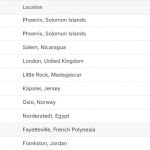How to create a Magento 2 playground test file with an initialised Magento 2 application
Create a test.php file in the root of your Magento 2 instance.
|
1 |
<?php require __DIR__ . '/app/bootstrap.php'; $bootstrap = \Magento\Framework\App\Bootstrap::create(BP, $_SERVER); /** @var \Magento\Framework\App\Http $app */ $app = $bootstrap->createApplication('TestApp'); $bootstrap->run($app); |
In the same place, create a TestApp.php file with the following content:
|
1 |
<?php class TestApp extends \Magento\Framework\App\Http implements \Magento\Framework\AppInterface { public function launch() { //dirty code goes here. //the example below just prints a class name echo get_class($this->_objectManager->create('\Magento\Catalog\Model\Category')); //the method must end with this line return $this->_response; } public function catchException(\Magento\Framework\App\Bootstrap $bootstrap, \Exception $exception) { return false; } } |
Call your test.php file in a browser to execute everything from TestApp::launch().
The createApplication method from the bootstrap class creates an application class instance and expects the implementation of \Magento\Framework\AppInterface that contains 2 methods.
You create your own class in TestApp to implement the interface. Since the catchException method always returns false, your app don’t handle exceptions. If something goes wrong, print it on a screen.
The implemented launch method is called by \Magento\Framework\App\Bootstrap::run. The run method behaves almost the same in spite of what the application passed as a parameter.
$response = $application->launch(); is the only thing that depends on the app. It means that calling \Magento\Framework\App\Bootstrap::run inits the Magento env and calls the launch method from your app. Therefore, put all the dirty code inside this method.
Then, \Magento\Framework\App\Bootstrap::run calls $response->sendResponse();, where under $response we mean everything what the launch method returns. Thus, return $this->_response; is required, as it returns an empty response.
The above app class extends \Magento\Framework\App\Http so you get request, response, and other parameters, but you can omit this by making your class extend nothing.

More tips from Magento 2 Developer’s Cookbook
(Magento Stackexchange Question) ()








